[This article was first published on straitstimes.com]
SINGAPORE – No one can look at the Kia EV9 and not do a double take. The car is enormous, with its angular shape and clean surfaces accentuating its size.
Beyond sheer expansiveness, the car looks like something from 2050.
The unconventional way its front section is structured, with headlights which might just shoot laser beams, is attention-grabbing. Flush body panels interspersed with sharp creases like those on a well-ironed pair of pants, and wheels which resemble cross-sections of gigantic drill bits – they come together cohesively to convey avant-garde uniqueness.
And instead of wing mirrors, it has side monitors which project images from hammerhead shark-like cameras. When the sun goes down, zany geometric shapes formed by its tail-lights and daytime-running LEDs flash like alien hieroglyphics. Yield, they say, yield to the shape of things to come.
Inside, convention takes a back seat too. A steering wheel which incorporates a yoke design rises from a flying saucer-shaped fascia with haptic keys built into a fabric-lined panel – the first such application I have seen.
There are three rows of seats, with a middle row which can swivel easily to face the third. The first- and second-row seats are fitted with ventilation and pillow-like headrests, with an automatic anti-fatigue massage function on the driver’s seat.
A motorised tailgate opens to reveal a configurable boot. There are controls to fold and unfold the third row of seats, and release buttons to collapse the second row (reinstating them is manual).
With the third row folded, the boot will accommodate bulky items with ease. There is a three-pin electrical socket to power a mini-fridge, an induction stove or a hairdryer, making this six-seater sport utility vehicle (SUV) ideal for outdoor activities.
The extra-spacious living quarters – courtesy of a 3,100mm wheelbase and high ceiling – is lit by a sunroof as well as a panoramic glass roof, and cooled by three rows of diffuser vents fed by a multi-zone climate control system.
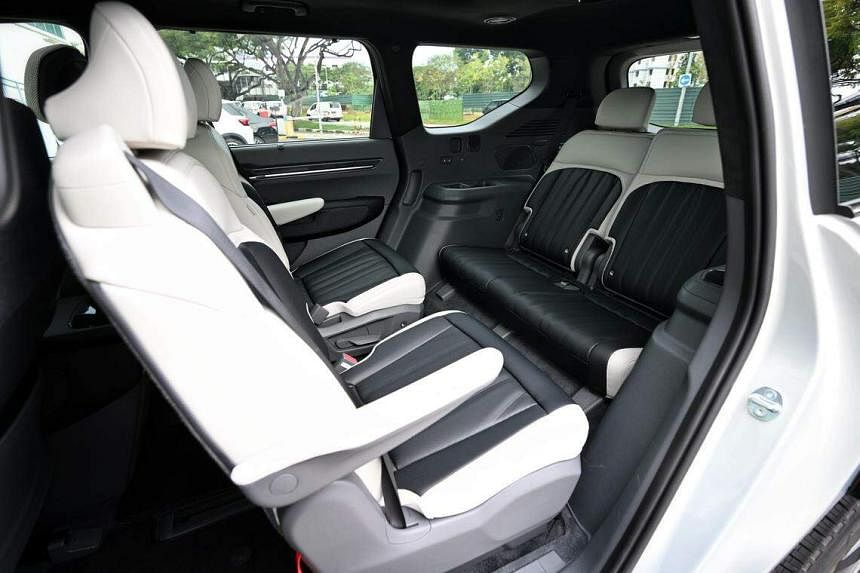
Driving the 5,015mm-long, 1,980mm-wide and 1,780mm-tall 2.6-tonne Kia is not overly daunting.
The car is powered by two motors driving both axles. Like most electric vehicles (EVs), peak torque – in this case, 700Nm – is delivered instantly. While its six-second century sprint may not be particularly impressive, the car is very quick for its size.
Being just below 1.8m, the car will fit older covered carparks, but those with tight and sharp ramps should be avoided because of the Kia’s width.
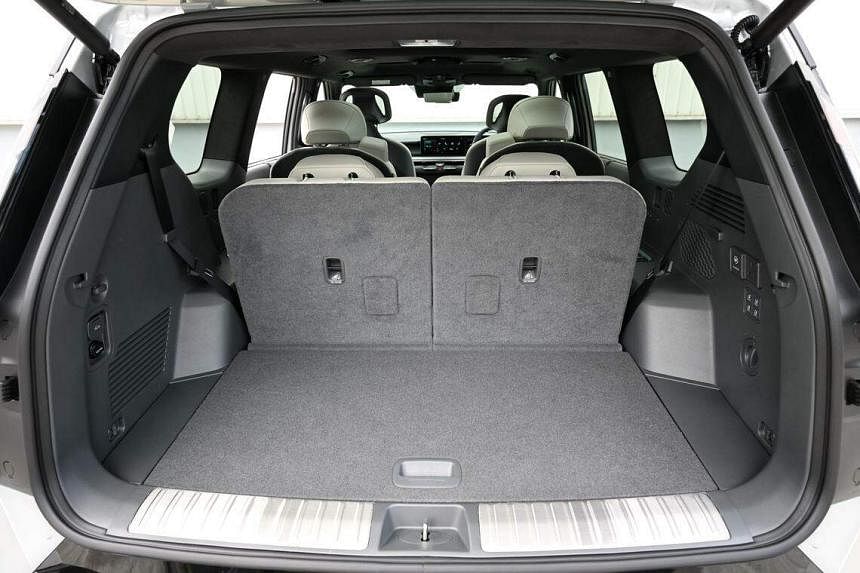
Keeping the giant in lane on the go is fairly easy. On narrower stretches, the car’s lane-keeping system – which I usually abhor – comes in handy.
The EV9 is surprisingly stable and tractable at higher speeds, with better-than-average body control.
But its weight manifests in two ways. One, less-than-smooth surfaces intrude to rattle the cabin. Two, you have to wrestle with the steering to keep the car in lane round a fast sweeper.
Its infotainment system powers a 14-speaker Meridian hi-fi and it comes with wireless Apple CarPlay and Android Auto. Alas, quite a number of gremlins reside here, as well as in its other electronic amenities.
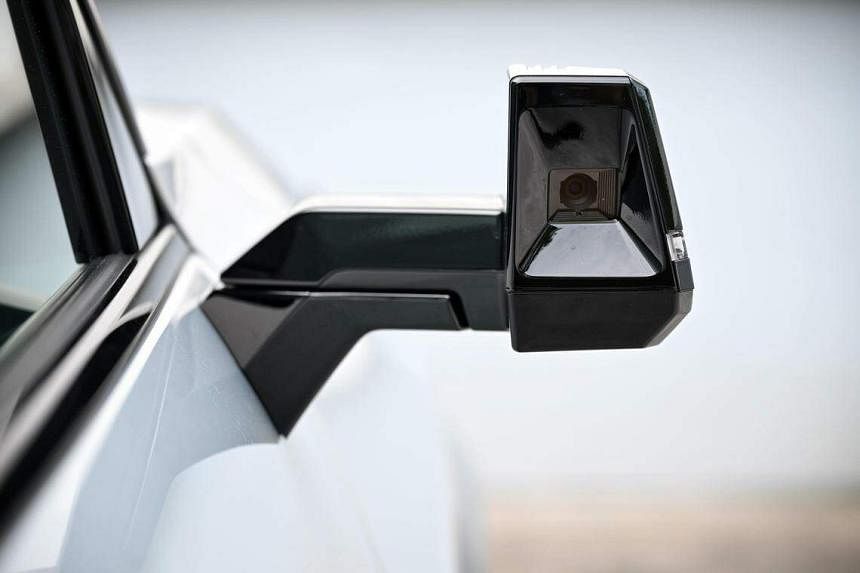
While phone pairing and unpairing can be done easily, the system often fails to detect a connection at the start of each journey and requires fiddling to put things right. Haptic keys on the fabric-lined panel require abnormal pressure to work too.
But when things work, they work beautifully. You can use voice control for various phone functions, including accessing and replying text messages. It would have been nice to have navigation projected onto the car’s head-up display, though.
Cameras in place of mirrors are a bad idea. Depth and distance are lost and, at night, vehicles without their headlights on (few but regular) cannot be seen clearly.
I wonder how they perform in heavy rain, but I have an inkling. The test car’s left camera had condensation, which fogged up the image on the monitor.
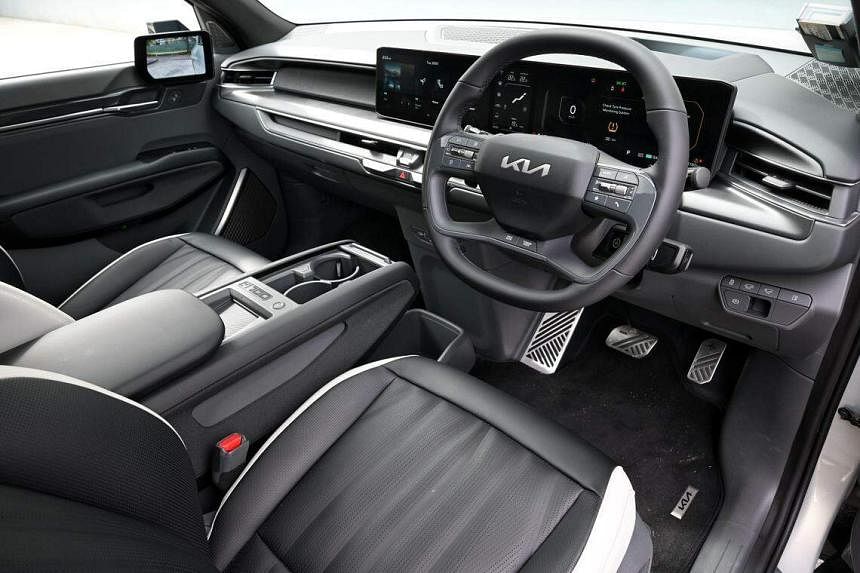
The car’s electronic rear-view mirror can be deactivated to resurface a conventional one. But you have to live with the side monitors.
Carmakers which resort to this fanciful and costly option say cameras are more aerodynamic than regular mirrors. There may be some truth in this. The test car averages 19.4kWh/100km, which is better than Kia’s stated 22.3kWh/100km and better than some EVs of a similar size or weight.
Perhaps it explains the lack of wind noise too. All you hear as you squeeze the throttle is a spirited electronic whir that rises in volume with speed.
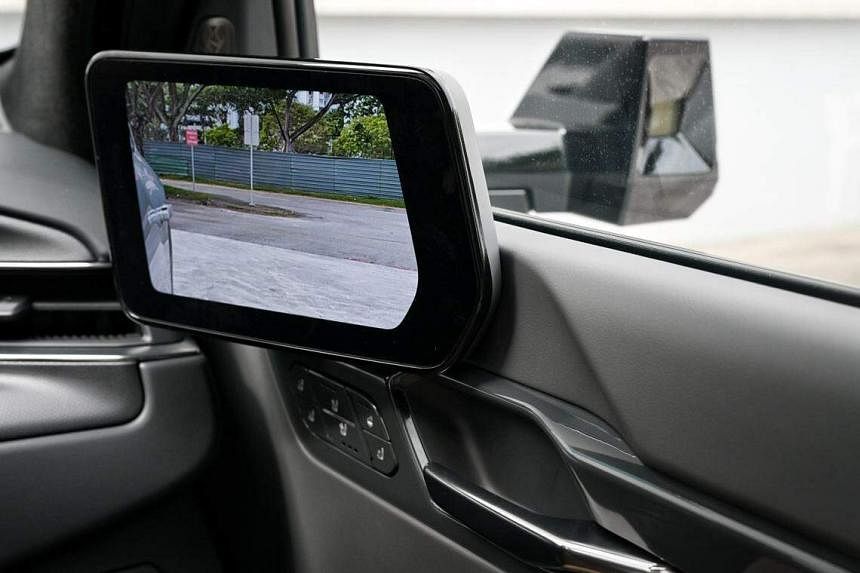
The EV9 is the first South Korean car to breach the $400,000 mark (with certificate of entitlement). As such, high expectations are par for the course.
The car meets most of them, except for the electronic glitches, which Kia would do well to resolve. It would be a pity for these niggles to mar an otherwise excellent product.
[Source article: straitstimes.com/life/motoring/car-review-kia-ev9-makes-big-and-bulky-desirable]
